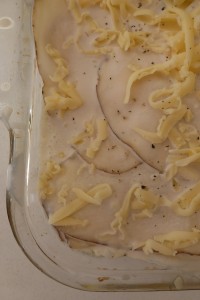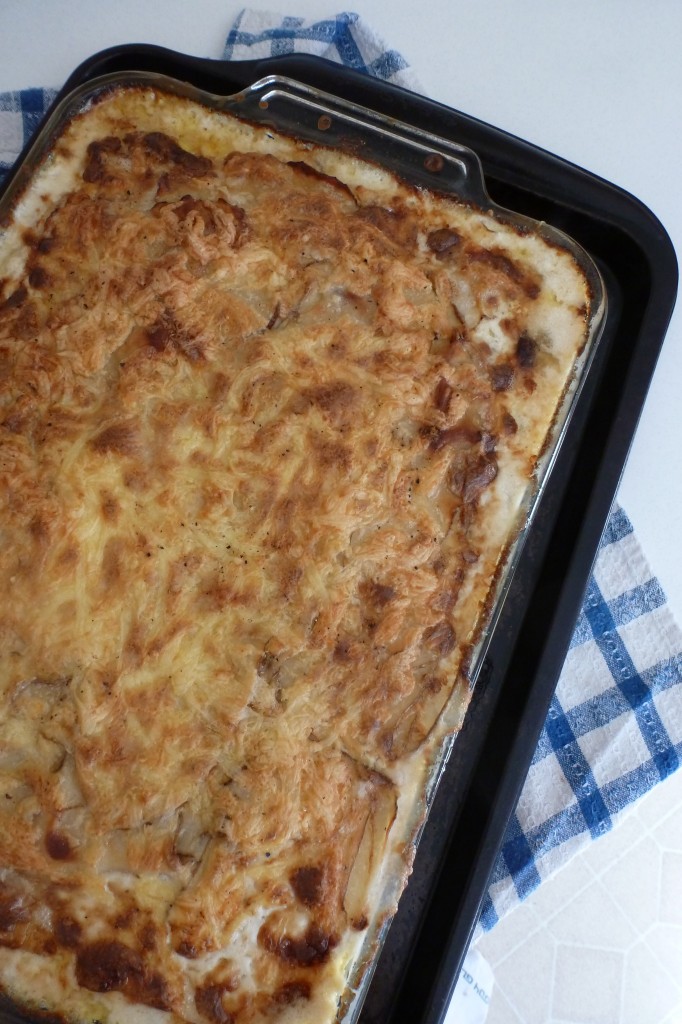 I think I remember scallop potatoes more fondly than any other form of the tuber. Maybe French fries were more highly prized when I was a child, but truth be told I ate them much more often than scallop potatoes. Scallop potatoes, being a casserole dish, was reserved for large dinners, especially Easter.
I think I remember scallop potatoes more fondly than any other form of the tuber. Maybe French fries were more highly prized when I was a child, but truth be told I ate them much more often than scallop potatoes. Scallop potatoes, being a casserole dish, was reserved for large dinners, especially Easter.
At its core the dish is potatoes, cut into rounds (scalloped), then baked in cream and cheese. There are obviously countless variations; I know some mothers who bake their scallop potatoes in mushroom or onion soup mix. There is a classic French dish called pommes à la dauphinois that is identical to scallop potatoes. The addition of grated cheese to the top of the dish would make gratin dauphinois. Sometimes eggs are included with the cream to bind the dish, though if you use starchy potatoes and bake the dish uncovered so that the cream reduces, the egg binder is unnecessary.
Thomas Keller has popularized a version of this dish called pavé. Pavé means simply block, or square, and is related to the English word pave, as in paving stone. It is therefore applied to a number of dishes that take a blockish shape, though most famously sweet sponge cakes smooshed together with buttercream. Over the last few years most every fine dining restaurant in Edmonton has offered Keller’s potato pavé at some point or another.
Seriously the only difference between your mother’s scallop potatoes and Thomas Keller’s pavé is that she cut the potatoes to 1/4″ thickness with a knife, and Tom cuts them to 1/16″ or finer with a mandolin. I like leaving the skins on the potatoes. There’s a lot of flavour in the skins. And the sliced potatoes look nice with the dark perimeter.
You can use any type of potato, but the more starchy the potato, the tighter the layers will bind. When you cut into a casserole made with thinly sliced Russets, it will hold its shape very well, and each block can be extricated cleanly. Sweet potatoes, which have very little starch, will not bind and will slide over each other. If you want an especially tightly bound dish, you can weigh the pavé down after it comes out of the oven, pressing the potatoes together and exuding some of the excess cream. What a graphic image.
I use a cheese that blends the good melting characteristics of youth with the complex flavours of aged. Sylvan Star medium Gouda or Gruyere or six month Pecorino from The Cheesiry, for instance.
Bake at medium heat for a long time, uncovered. This will let the cream reduce, and the cheese on top brown and form a crust. The dish is done when a paring knife slides easily into the cooked potatoes.

